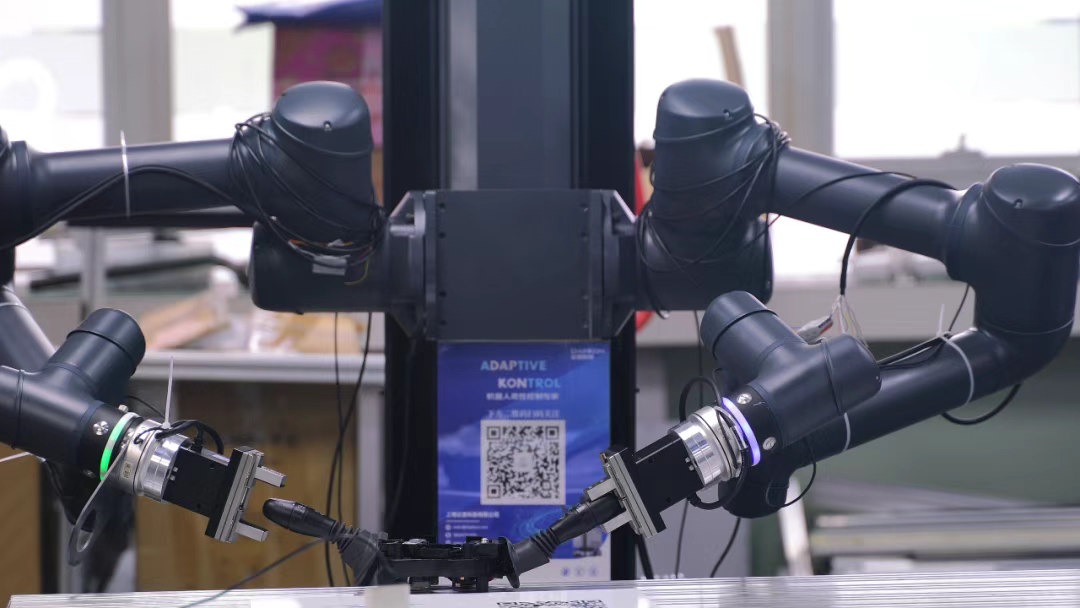With the rapid development of industrial automation, manufacturing companies face multiple pressures to improve production efficiency, ensure product quality, and reduce labor costs. As a crucial component of modern industrial robot systems, the high performance of robot guide handles has become a key factor driving the upgrade of automated assembly. This article will comprehensively analyze the functions, technical features, application scenarios, and key considerations for purchasing robot guide handles to help companies understand how to improve automated assembly through high-performance guide handles.
1. Definition and Function of Robot Guide Handles
A robot guide handle (Robot Teach Pendant/Robot Guidance Handle) is a key device used by operators to manually control robots for teaching, debugging, and precision assembly. It accurately transmits operator movements to the industrial robot, enabling the replication of complex trajectories, fine-tuning of movements, and high-precision automated assembly.
Guide handles are typically equipped with high-precision sensors, force feedback systems, and programmable control interfaces. Their ergonomic design ensures comfortable operation and offers multiple control modes, such as position teaching, force control, and path planning.
Their core functions include:
Precise control of robot motion: The operator can directly guide the robot arm's movements through the handle to complete complex assembly tasks. Improved Assembly Precision: Fine-tuning operations enabled by the handle can significantly reduce errors and improve assembly consistency.
Accelerated Debugging Efficiency: When launching new products or processes, the handle enables rapid teaching, reducing production setup time.
Enhanced Safety: High-performance guide handles often feature emergency stop and force limiting functions to ensure operator and equipment safety.

2. Technical Features of High-Performance Robot Guide Handles
The key differences between high-performance guide handles and ordinary handles lie in their precision, stability, ease of use, and intelligence. These features are specifically reflected in the following aspects:
High-Precision Sensors: Accurate displacement and force feedback sensors are the core of high-performance guide handles. High-resolution sensors can capture micron-level displacement changes, providing reliable data support for precision assembly. Furthermore, force sensors can detect operating force in real time to prevent damage to workpieces caused by excessive force or collisions.
Multi-Degree-of-Freedom Control: High-performance guide handles often support 6 or more degrees of freedom (DOF) operation modes, allowing operators to flexibly guide the robot through complex paths in three-dimensional space. This is particularly important for the assembly of automotive parts, electronic products, and precision instruments.
Ergonomic Design: Prolonged operation of industrial robots can cause operator fatigue and compromise assembly quality. High-performance guide handles feature an ergonomic design, a moderate weight, and a comfortable grip. The buttons are strategically arranged, making operation smoother and reducing labor intensity.
Intelligent Functions: Modern high-performance guide handles often incorporate intelligent features such as automatic path optimization, force control assistance, and motion recording and playback. This not only improves operational efficiency but also provides data support for subsequent process optimization, enabling intelligent assembly management.
High Reliability and Durability: Industrial production environments are complex, and handles must be dustproof, waterproof, and shockproof to ensure long-term stable operation. High-performance guide handles are typically made of high-strength materials and feature a modular design, ensuring easy maintenance and a long service life.
3. Application Scenarios of Robotic Guide Handles in Automated Assembly
High-performance guide handles are widely used in industries such as automotive manufacturing, electronics assembly, precision instrument processing, and food and pharmaceuticals. Their primary application scenarios include:
Automotive Parts Assembly: Component assembly on automotive production lines requires high precision and consistency. Operators can use high-performance guide handles to teach the robotic arm to precisely assemble engine components, headlights, or instrument panels, significantly improving assembly efficiency while reducing human error. Precision assembly of electronic products: The assembly process for electronic products such as mobile phones, laptops, and tablets requires extremely high component positioning accuracy. High-performance guide handles help operators precisely adjust the robot's motion trajectory, ensuring the correct installation of tiny components and avoiding rework and damage.
Medical device and precision instrument manufacturing: Medical devices and precision instruments require stringent operating environments and extremely low tolerance for error. High-performance guide handles allow operators to perform teaching and fine-tuning within a safe range, achieving high-precision assembly while ensuring the safety of both equipment and operators.
Automated welding and coating: Smooth and repeatable robot movements are crucial in welding and coating processes. High-performance guide handles guide the robot along the optimal trajectory, reducing solder joint errors and uneven coatings, thereby improving product quality.
4. Advantages of High-Performance Robot Guide Handles for Automated Assembly
Improving Production Efficiency: Through rapid teaching and optimized paths, high-performance handles can significantly reduce assembly time.
Ensuring Assembly Quality: Precisely controlling robot motion reduces errors and improves product consistency.
Reducing Labor Costs: Reducing reliance on highly skilled operators and standardizing the assembly process. Enhanced Flexible Manufacturing Capabilities: Adapt to high-mix, low-batch production needs, enabling flexible automated assembly.
Optimized Production Safety: Equipped with emergency stop and force feedback functions to protect operators and equipment.
5. Key Factors in Selecting High-Performance Robot Guide Handles
When selecting high-performance robot guide handles, companies should focus on the following aspects:
Accuracy and Resolution: Select a handle with appropriate accuracy and resolution based on assembly requirements.
Compatibility: The handle should be compatible with existing robotic systems and control software.
Operational Comfort: Weight, grip, button layout, and feel are important considerations for long-term use.
Durability and Reliability: Consider the protection level, material strength, and service life.
Intelligent Functionality: Whether it has intelligent functions such as force control assistance, motion recording, and path optimization.
After-sales Service: Technical support, training, and maintenance services provided by the supplier are also crucial.
6. Case Study: High-Performance Robotic Guide Handles Empower Intelligent Assembly
For example, an electronics manufacturer implemented a high-performance robotic guide handle on its production line, achieving the following improvements:
Assembly efficiency increased by 30%: Rapid robot teaching and path optimization significantly increased robot assembly speed.
Product qualification rate increased by 15%: High-precision control reduced component misassembly and rework.
Operator workload reduced: Ergonomic design reduced fatigue from prolonged operation.
Flexible production capabilities increased: Assembly processes can be quickly adjusted to meet the production needs of different product models.
This case study demonstrates that high-performance robotic guide handles not only improve production efficiency but also optimize the company's overall automation level.
High-performance robotic guide handles play a vital role in modern automated assembly. They not only enhance production efficiency and assembly accuracy, but also provide reliable support for companies to achieve intelligent and flexible production. With continuous technological advancements, high-performance guide handles will become more intelligent and user-friendly, injecting new impetus into the development of industrial automation. When selecting a guide handle, companies should fully consider accuracy, compatibility, comfort, and intelligent features to ensure that the handle can maximize its value in production.
By rationally configuring and applying high-performance robot guide handles, companies can stand out in the fiercely competitive market and achieve comprehensive optimization of production efficiency, quality, and costs.
As a professional robot guide handle factory, Dapkon is committed to providing high-performance, precise, and reliable guide handles to various industrial automation companies. Leveraging advanced sensor technology, ergonomic design, and intelligent control systems, Dapkon's guide handles not only improve the efficiency and accuracy of robot assembly but also meet the flexibility requirements of various production lines. Furthermore, the company provides comprehensive technical support and after-sales service to ensure that each handle is stable and reliable in practical applications, providing a solid foundation for companies to achieve intelligent manufacturing and automation upgrades.
www.dapkon.ai
dapkon
About Author
You may also like
-
Custom DNA Oligo Synthesis Services & Solutions | Gene Universal
-
R-577 Rutile Titanium Dioxide Pigment for Coatings in Surface Design
-
4-Hydroxyacetophenone in Cosmetic Applications and Formulation Design
-
Why Glass Fiber Powder Is Gaining Importance in Advanced Material Applications
-
How to Choose the Right Pegboard Display Hooks for Your Needs
